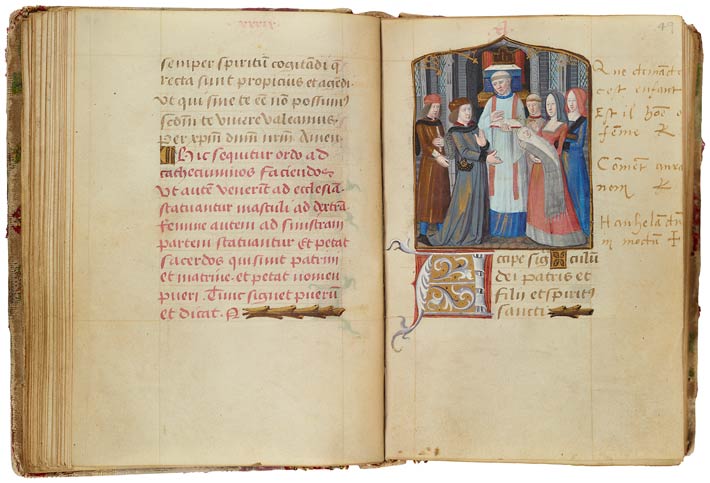
The baptismal rite in this Pontifical (a liturgical service book used by a bishop) is illustrated by a baptism scene with people dressed in contemporaneous fashions. Thus the godfather in gray and, behind him, the father in brown wear the gown of the 1480s that is loose, without the flaring pleats popular during the previous decades. They both wear a hat with a low crown and a divided, upturned brim. Slung across each man's chest is a black cornet, which is attached to a fur hat falling down the back. The pink gown of the godmother has a new square neck.
Twilight of the Middle Ages
This was a period of transition in northern Europe—the Middle Ages were not yet over, and the Renaissance had not yet begun. Both King Charles VIII and Louis XII invaded Italy, and these military campaigns exposed France to Italian art, culture, and fashion. At the same time, the Late Gothic style still dominated the arts—and clothing—of northern Europe. Fashions of this period reflect these conflicts.
In the 1480s, the look for men changed abruptly. Padded shoulders and the V-shaped silhouette disappeared. Long loose open gowns came into style and, by the 1490s, these gowns became especially voluminous and bulky. Round-toed shoes replaced the pointy pouleines. New, however, and probably reflecting Italian influence, were the man's outer coat called a sayon, the man's hat called a carmignolle, and doublets with slit sleeves through which the linen of the shirt protruded.
Women's gowns of this period also became fuller, and bombard sleeves were revived. The neck got square. The turret disappeared, while its frontlet remained, now attached to a new small-crowned coif.
